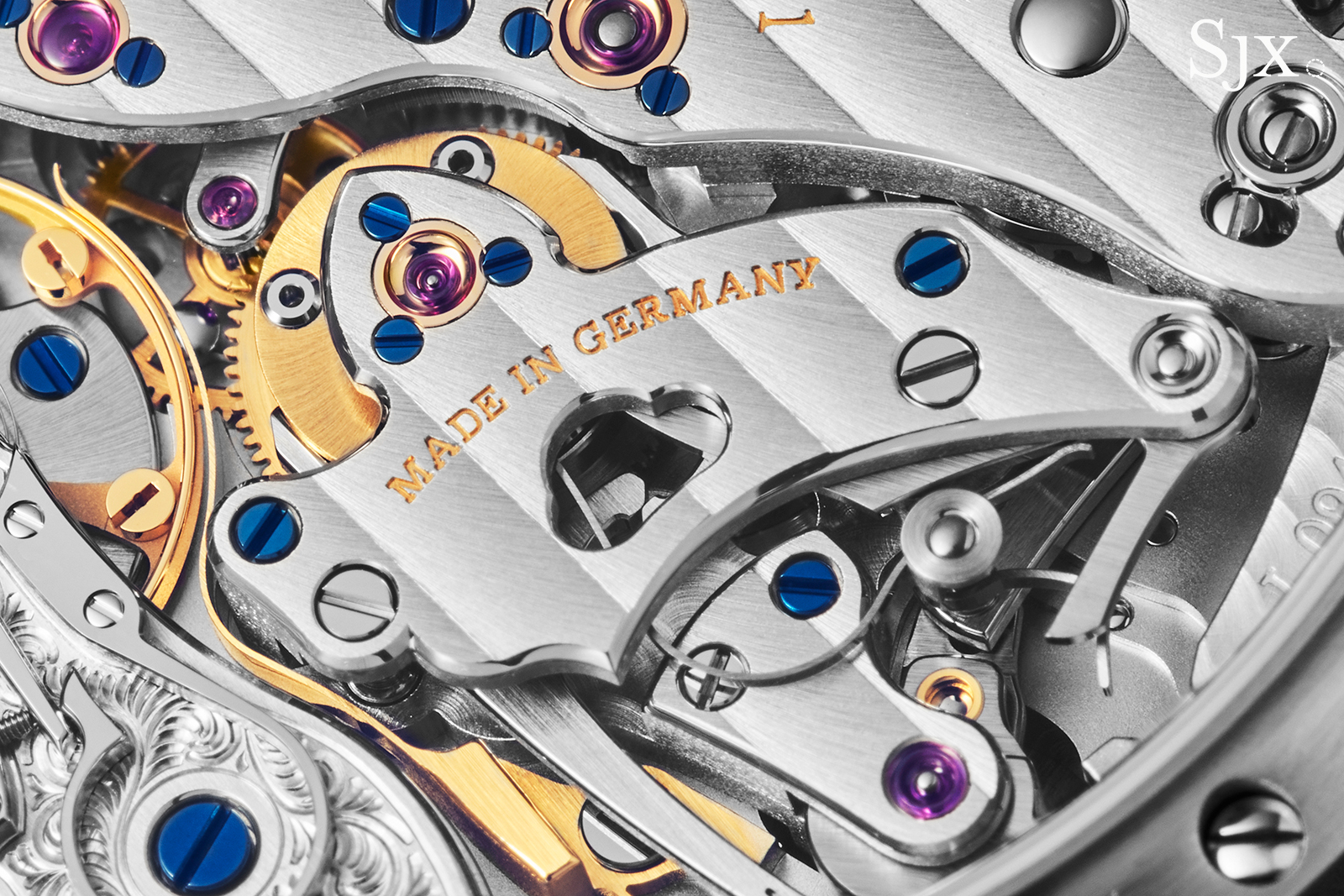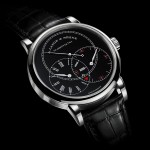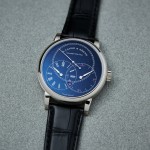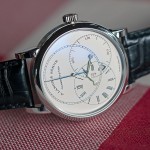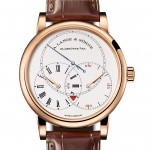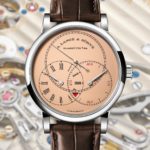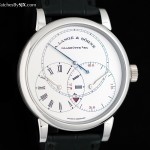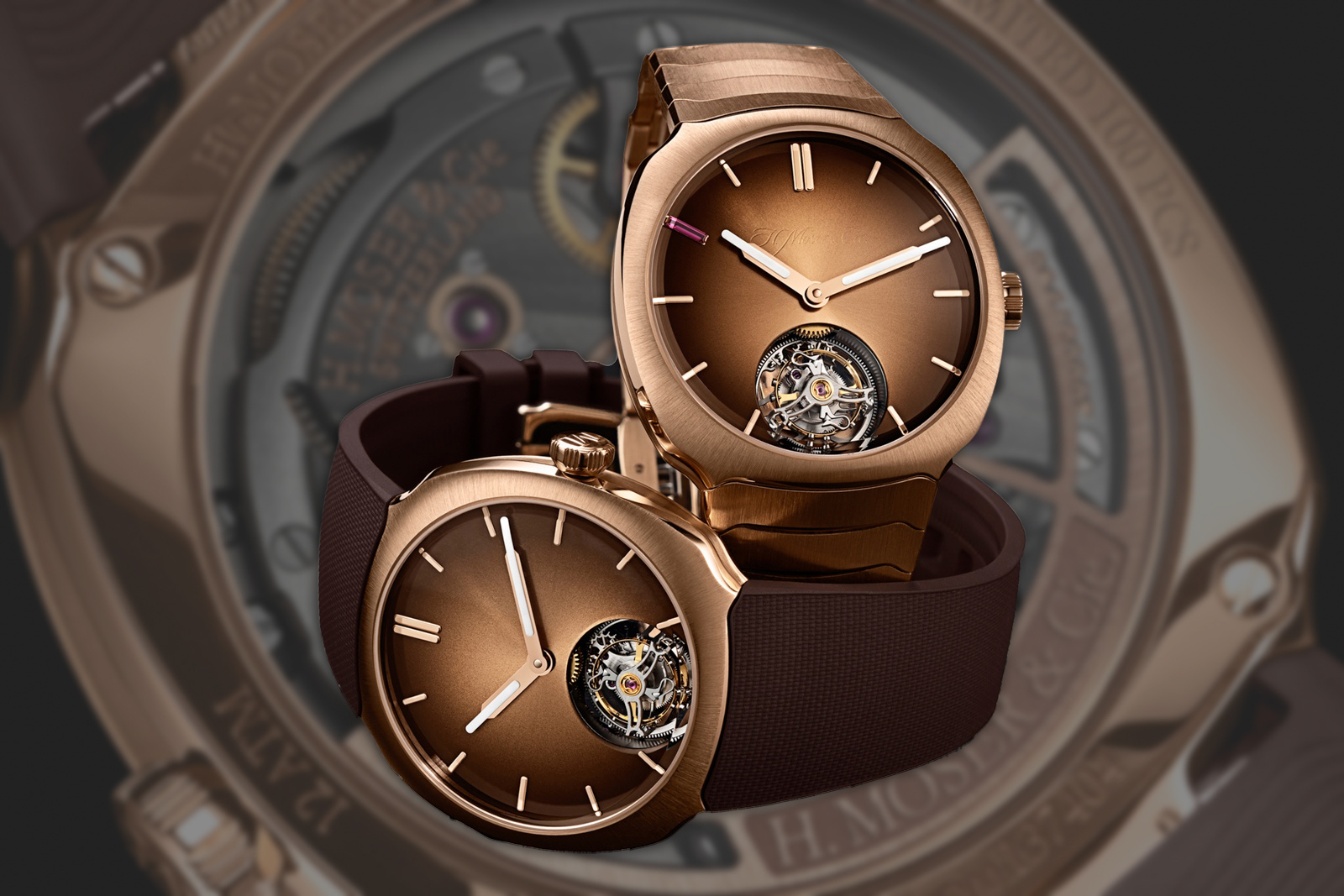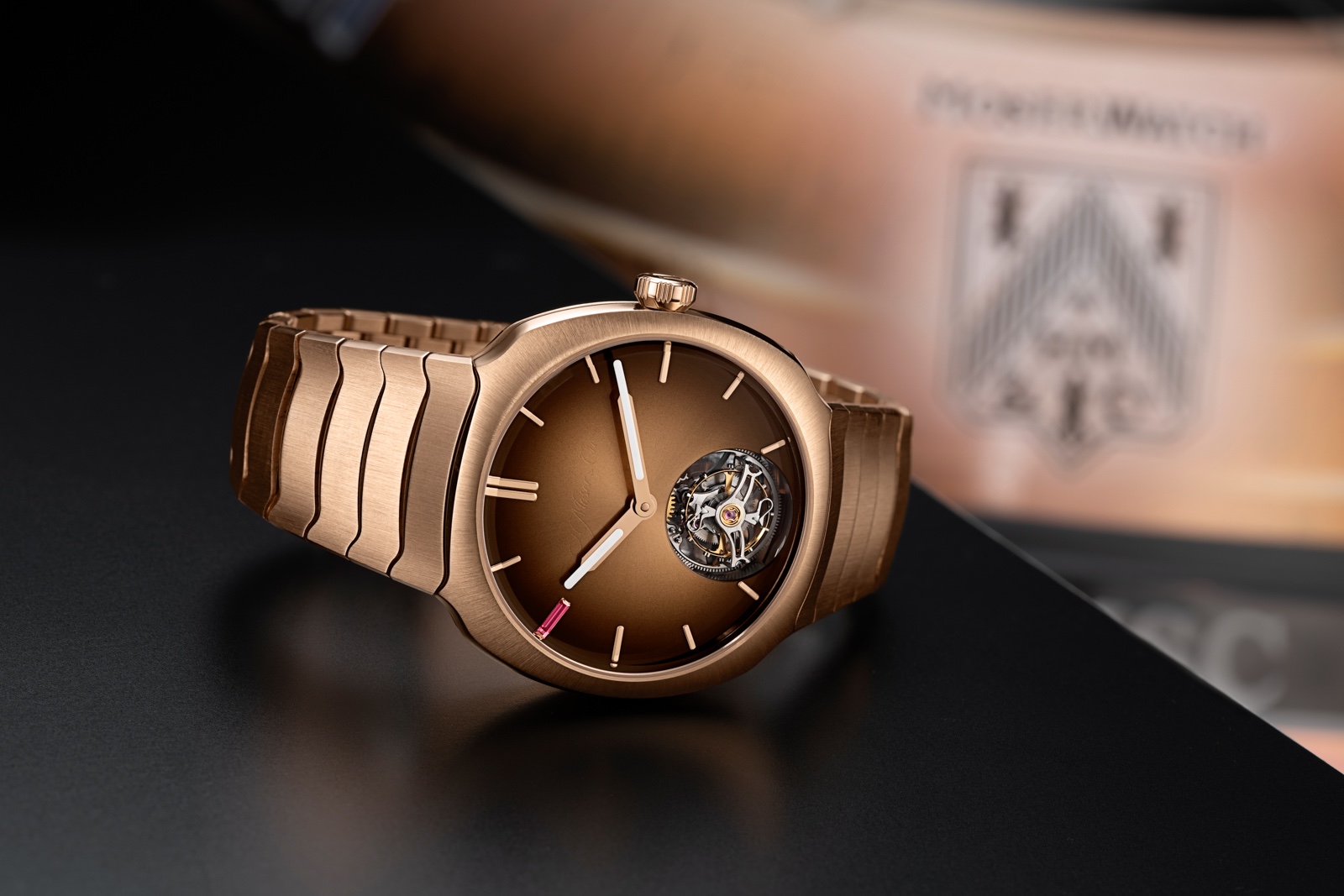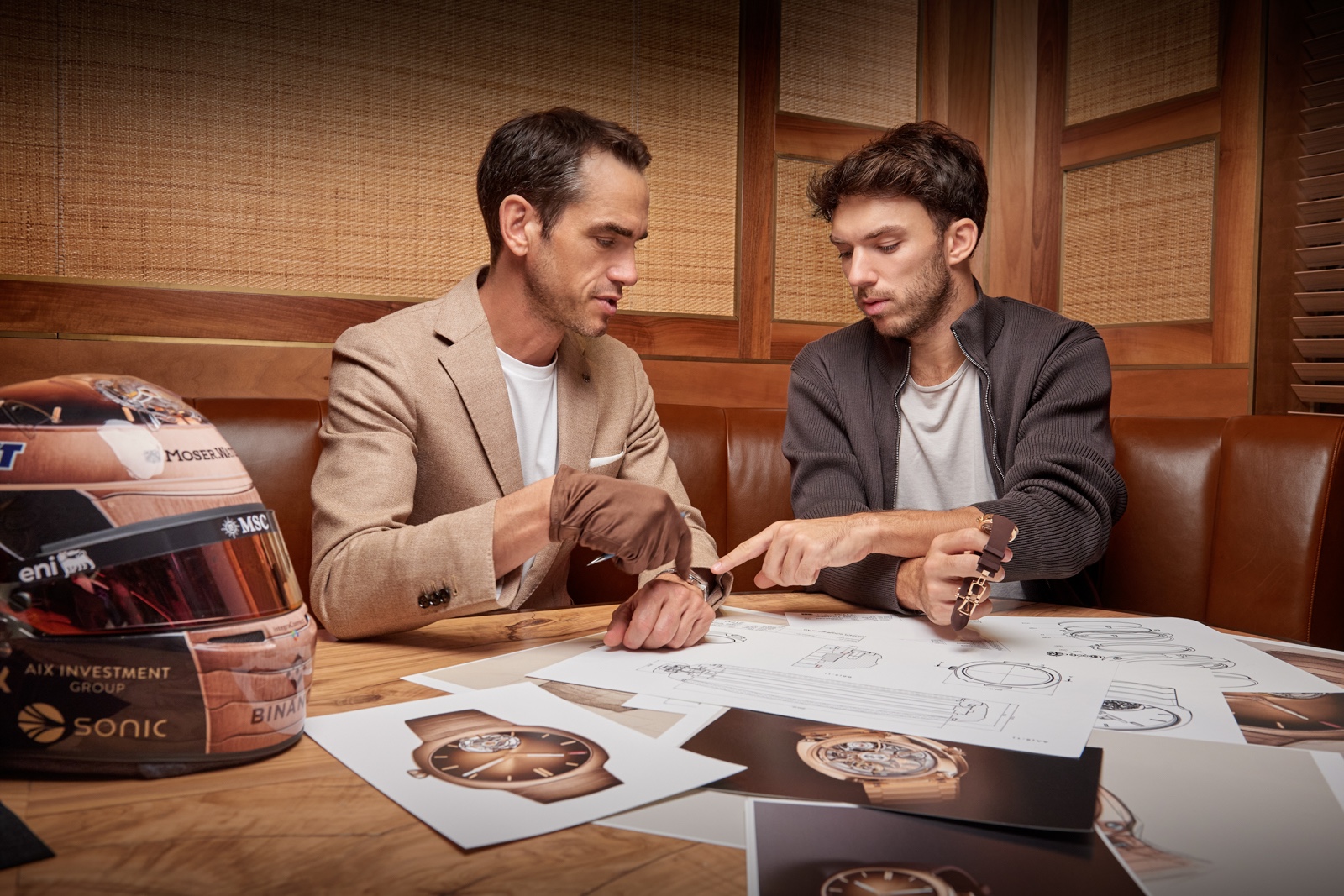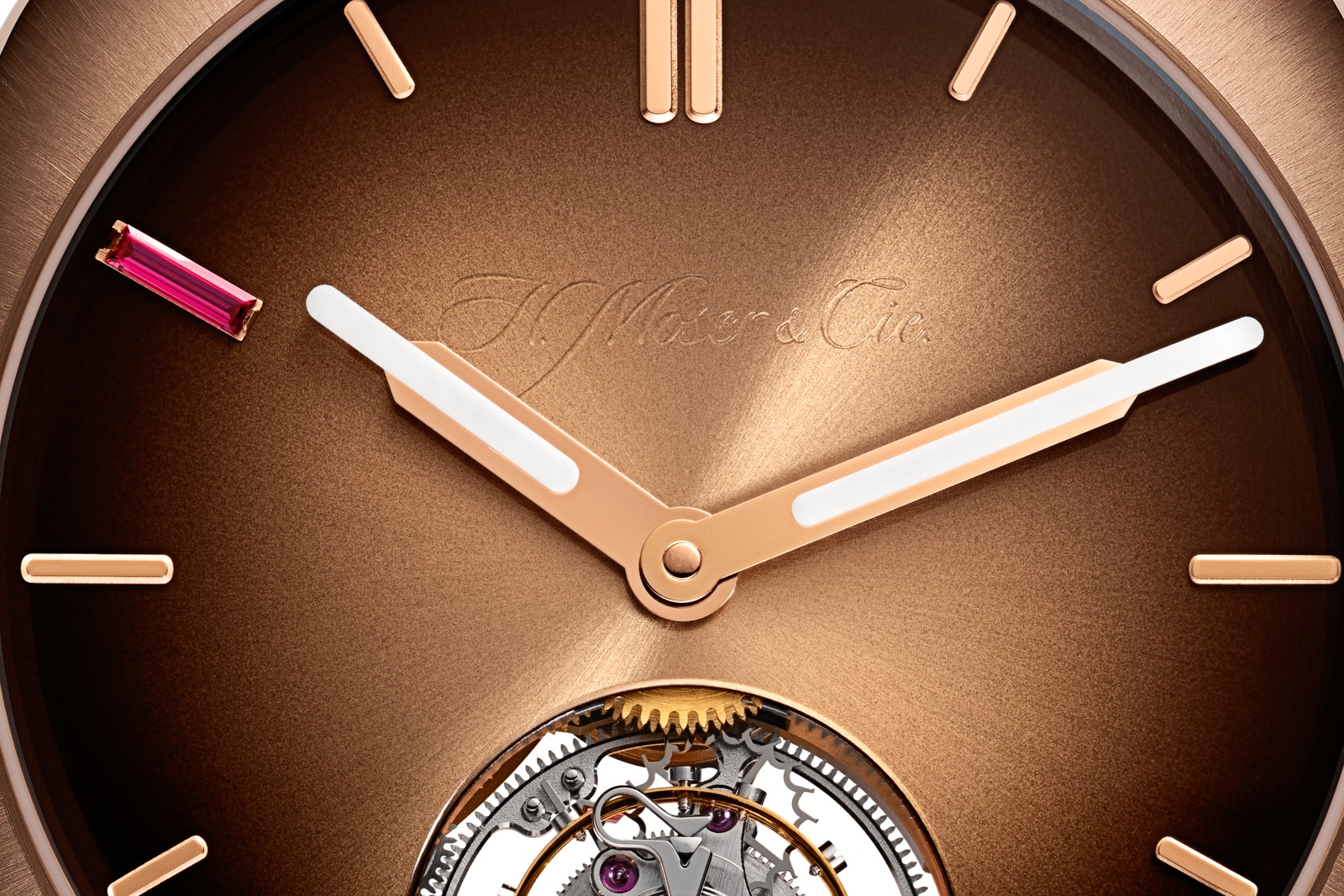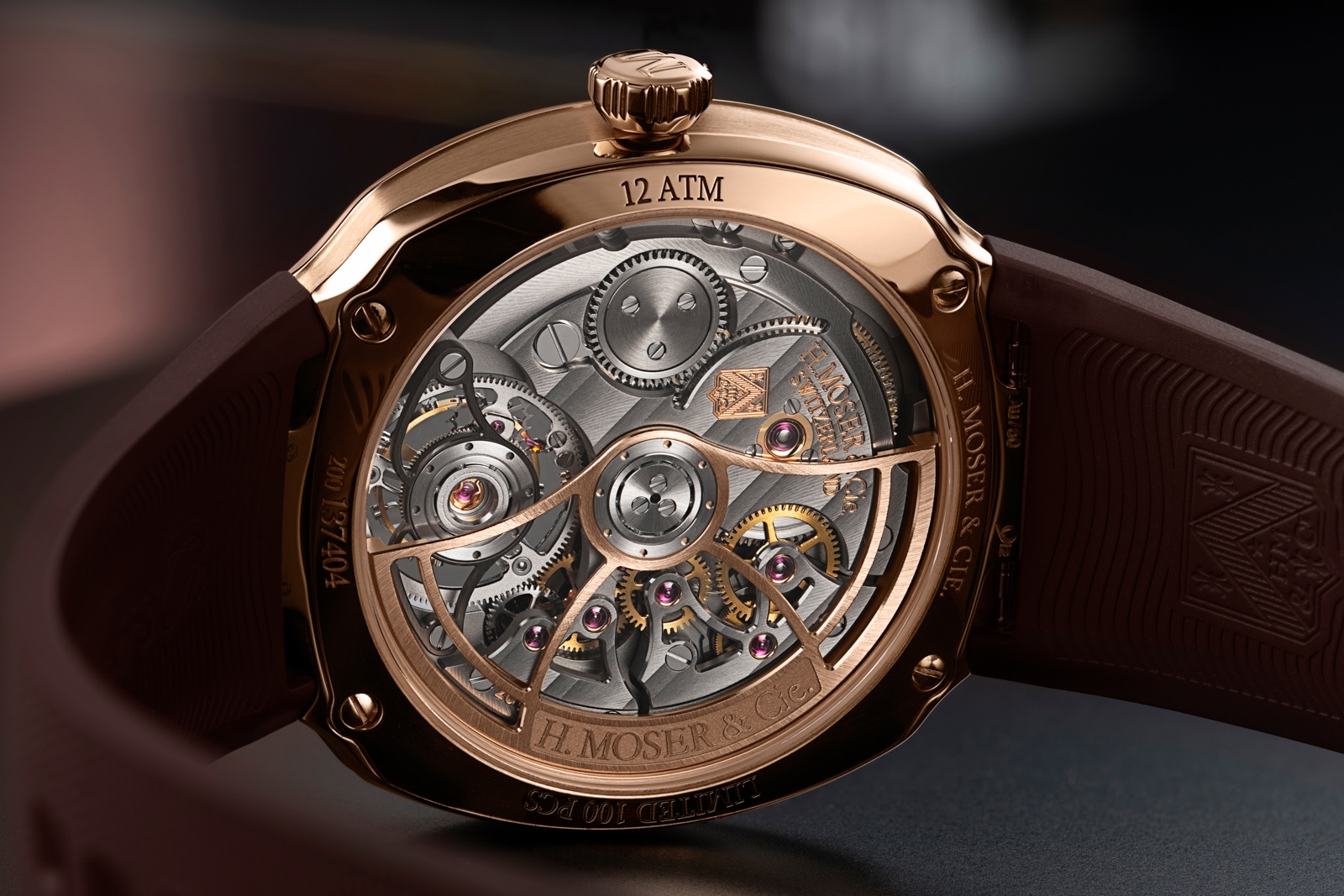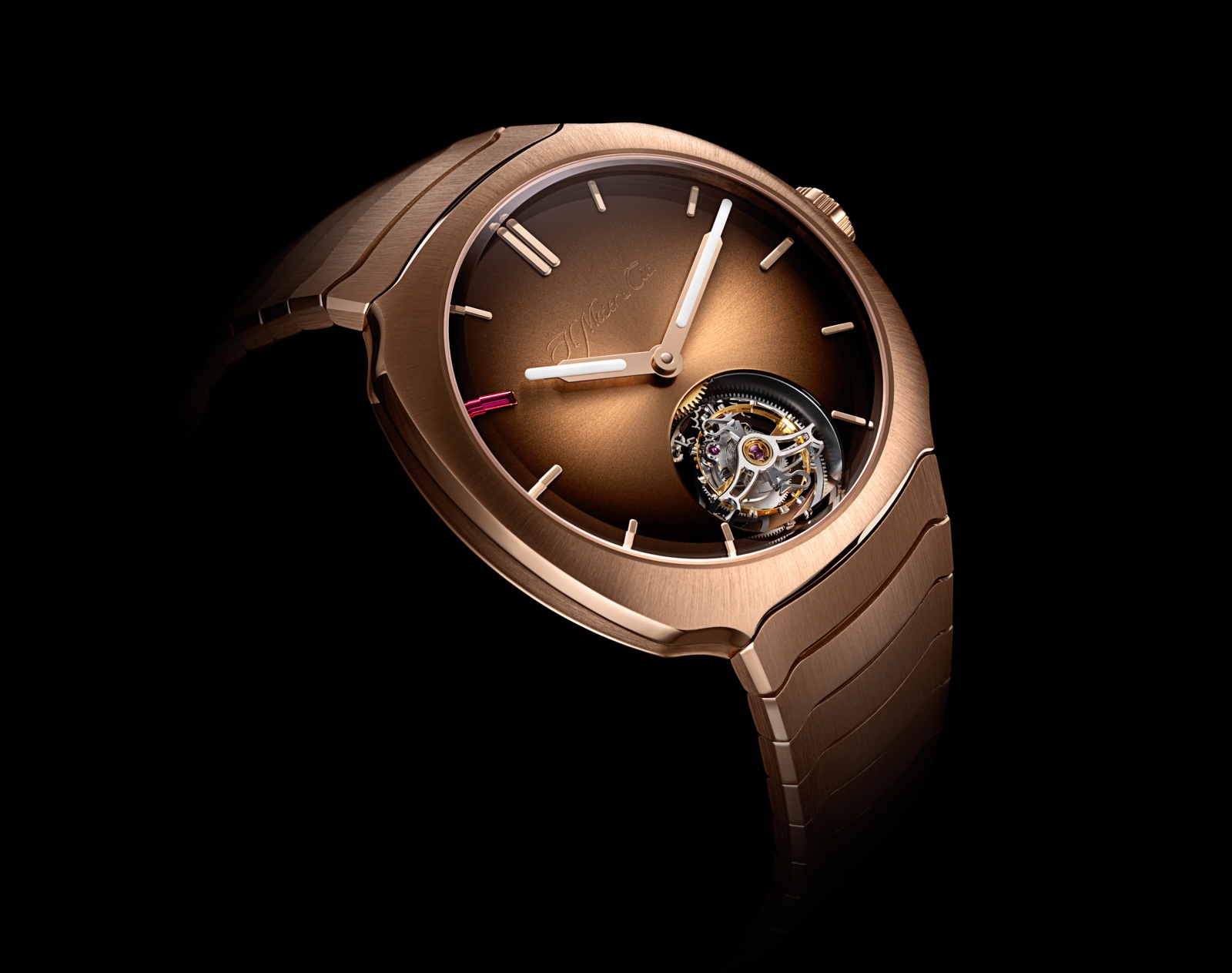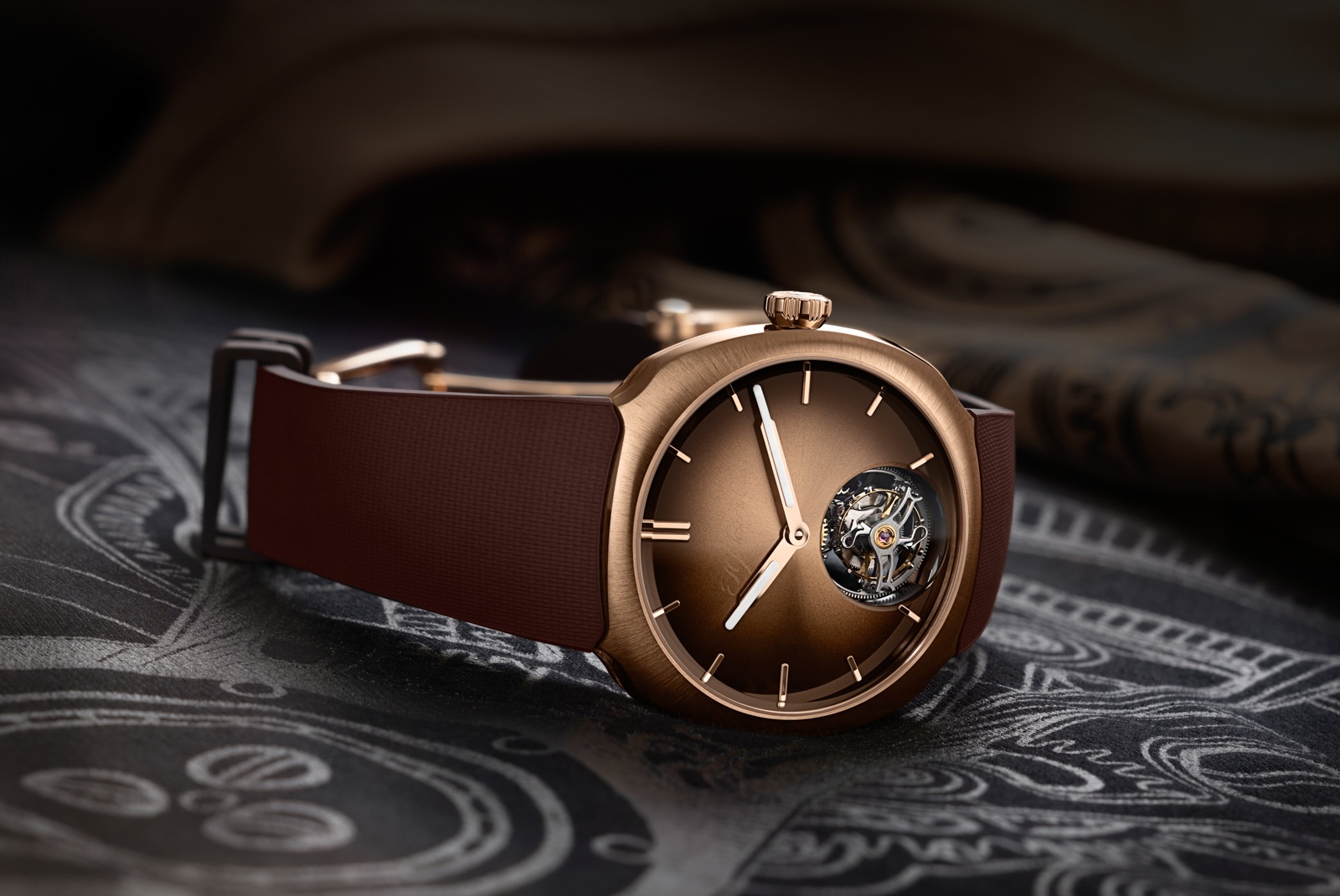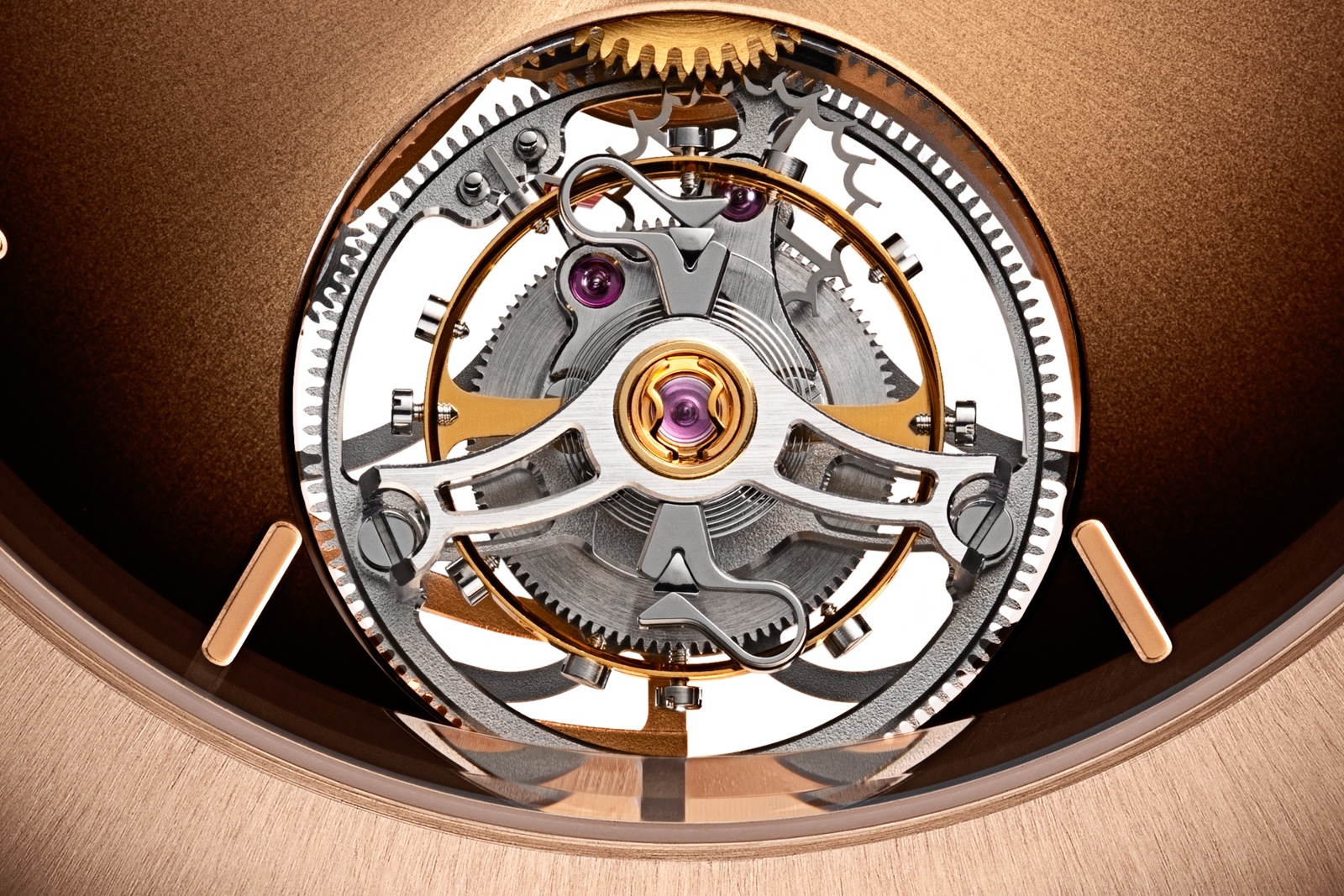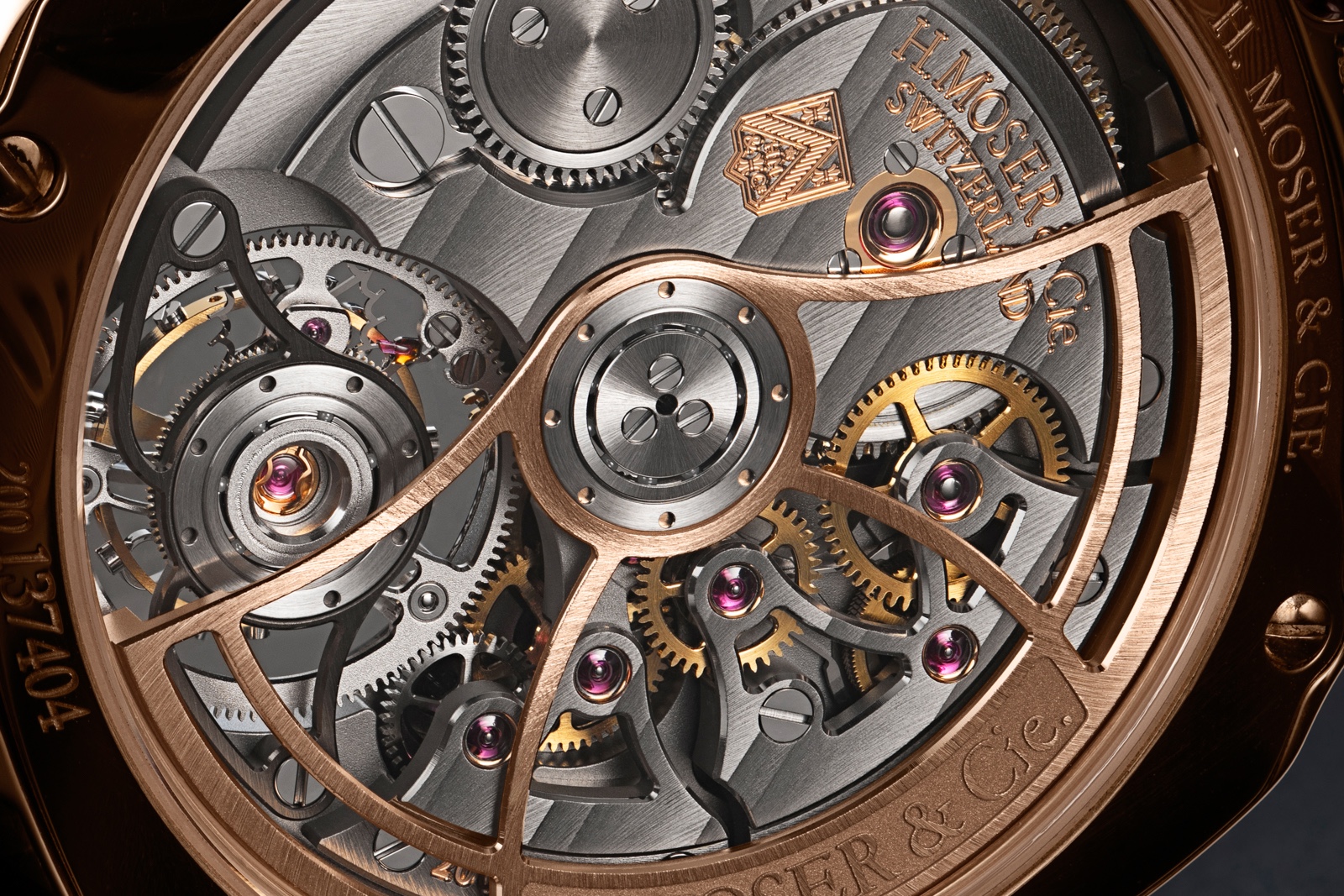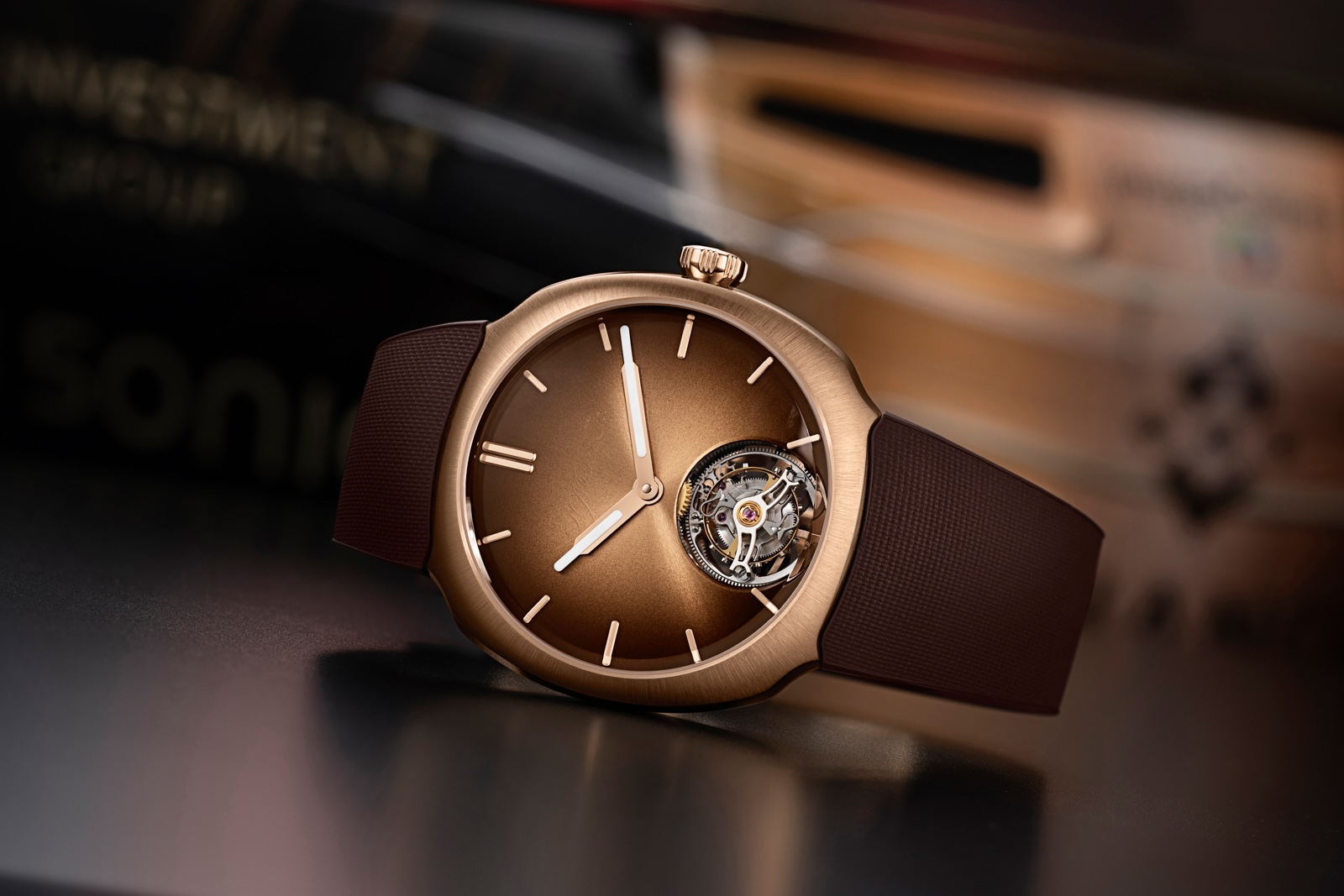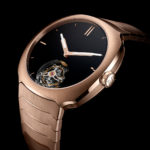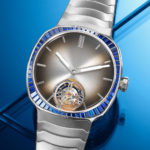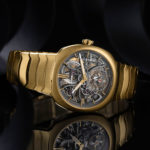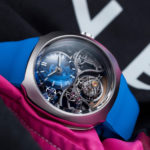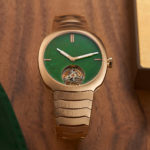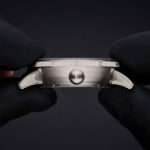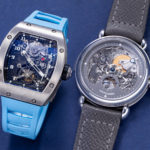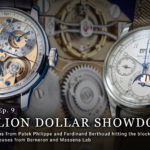Hands On: A. Lange & Söhne Richard Lange Jumping Seconds Pink Gold Dial
A fad but serious.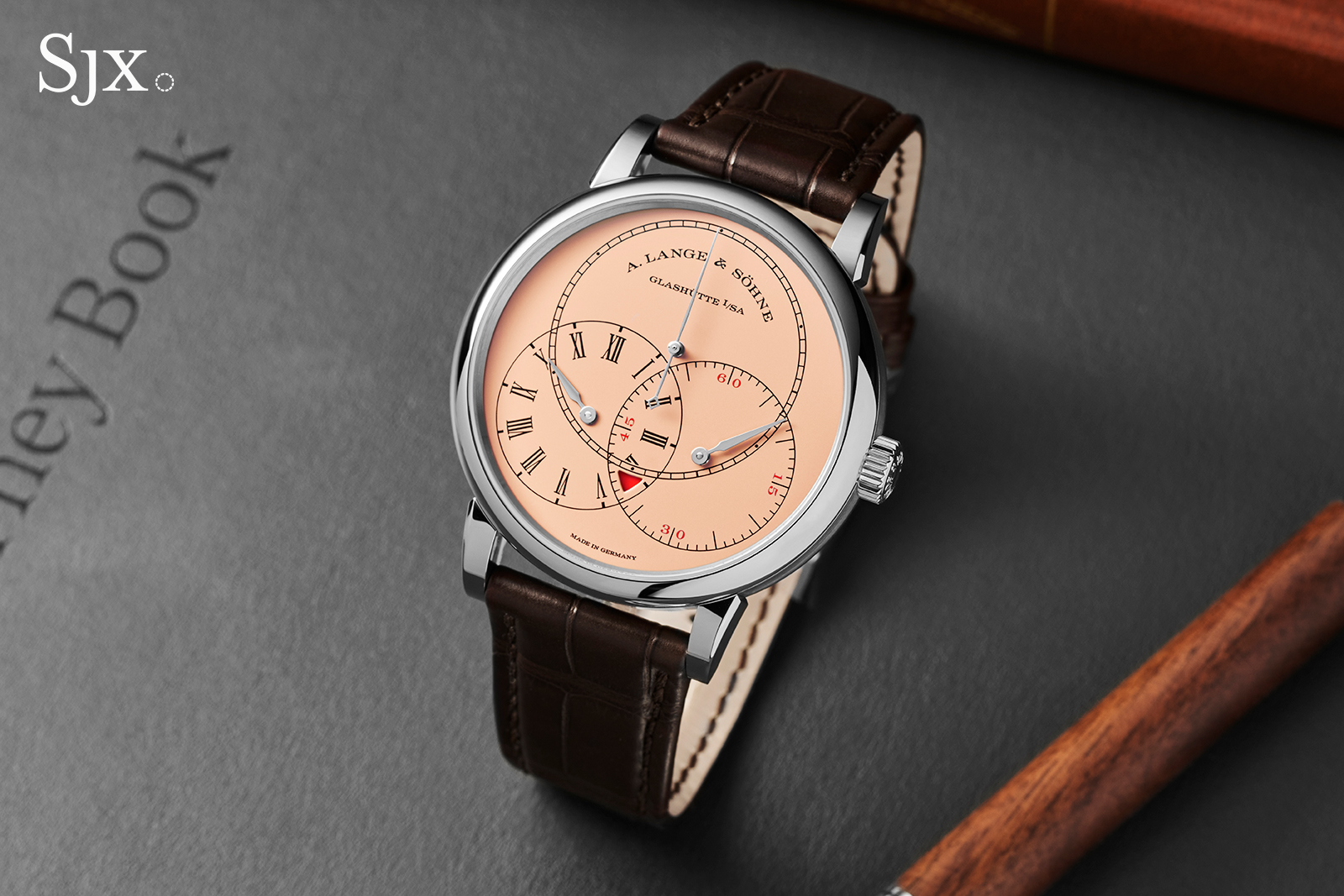
A. Lange & Söhne is a serious minded brand that rarely does fancy in terms of dials, so even a simple cosmetic makeover is novel for the brand. That’s true for the Richard Lange Jumping Seconds with a pink gold dial that was just launched earlier this month, applying a striking new look to a technically compelling but arguably under-appreciated watch.
Described officially as “pink gold” – it is actually solid gold – the dial is in a shade best known as “salmon”. This gives a vivid, fresh aesthetic to a watch that’s compact and surprisingly complex, combining a regulator-style display with a deadbeat seconds linked to a remontoir, as well as a hacking, zero-reset seconds.
Initial thoughts
The Richard Lange Jumping Seconds has always been an interesting watch in technical terms; the movement is unusual in function but typical Lange in terms of quality. Calibres like this are tangible illustrations of Lange’s prowess in both engineering and aesthetics when it comes to movements.
Despite being relatively complex, the Jumping Seconds is unusually compact for a complicated Lange watch, giving it surprisingly wearable dimensions. This gives the watch tangible and intellectual appeal. But the original versions, both with silver dials, were a little boring. The subsequent version with a black dial was high contrast and more appealing.
The latest version with a pink gold dial is the easiest to like. It’s an eye-catching livery that does justice to the mechanics inside. Of all the versions, this is arguably the one to have, though being a limited edition availability may be challenging.
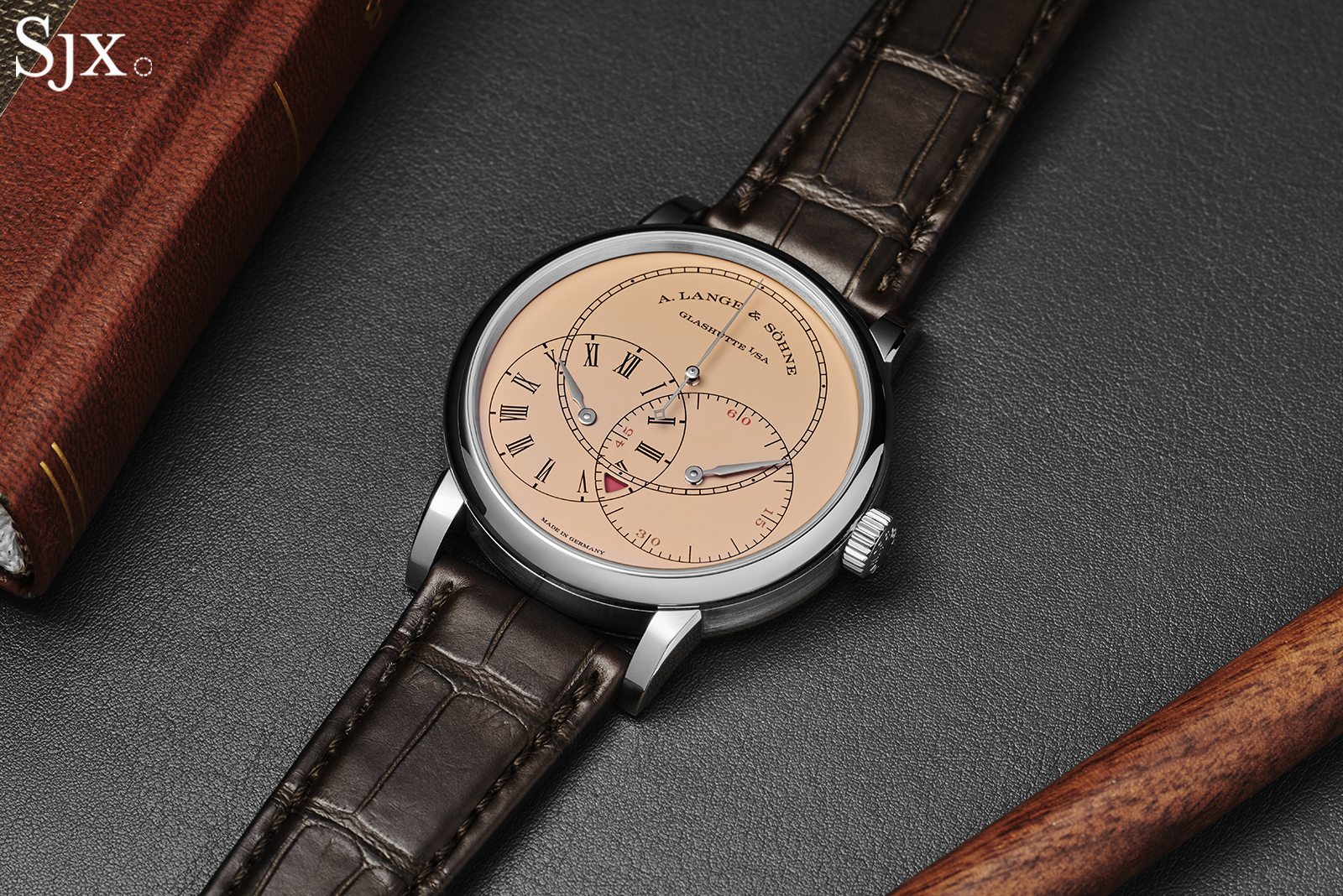
More generally, the “salmon” dial is faddish – just look at the number of online-only micro-brands offering dress watches in “salmon,” copper, and everything in between. Fortunately, Lange is a serious brand, and remains so.
It’s only rolled out a handful of watches with pink gold dials – five including this and all are limited editions – which keeps the colour special and also prevents the offerings from lapsing into fashion. Knowing the people who make the decisions on such things, I also trust Lange won’t overdo this colour.
The Richard Lange Jumping Seconds costs about US$100,000, which by today’s standards offers good value considering the complication and quality. There are worse watches that cost the same or more, and few watches that are comparably good and comparably priced.
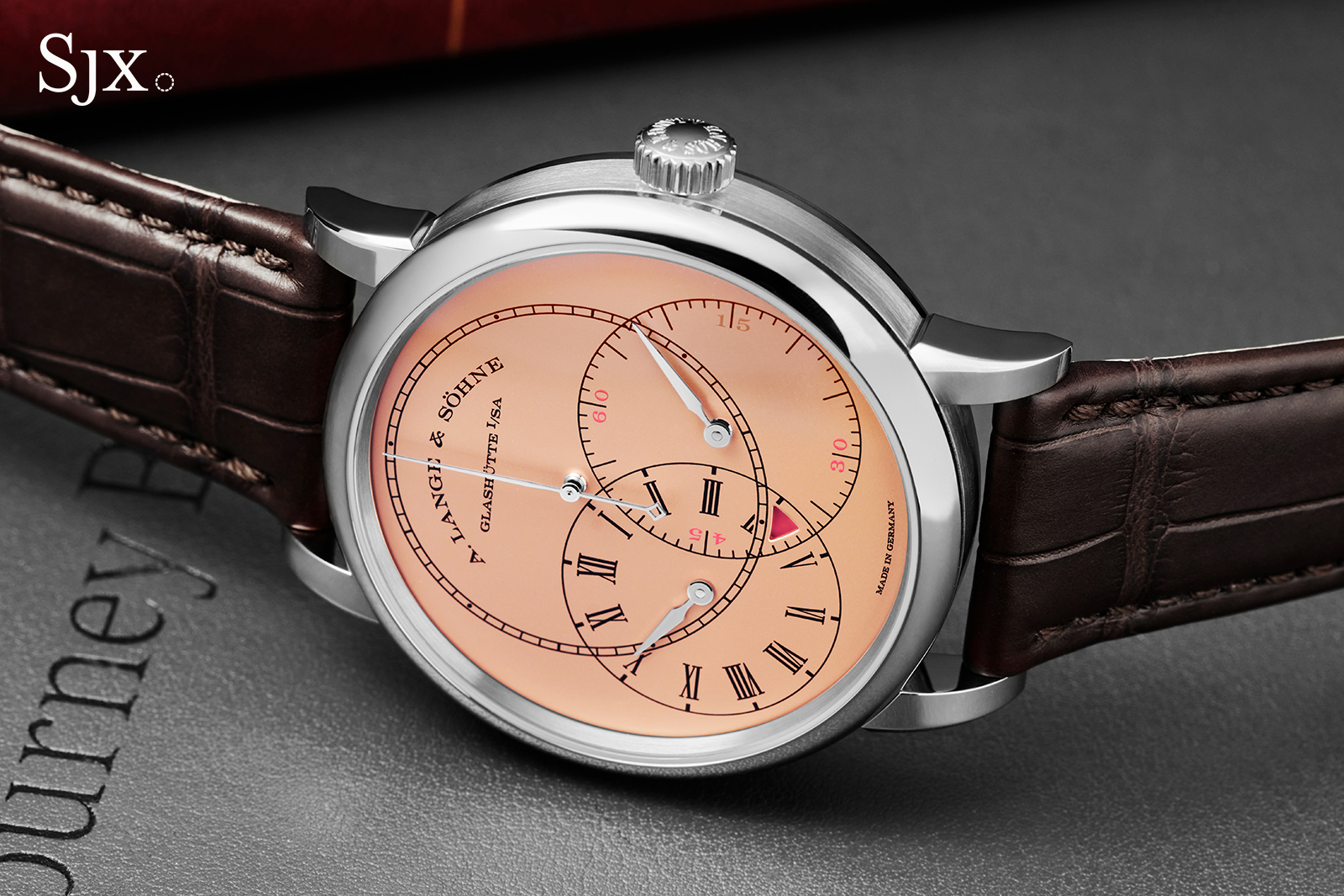
Seyffert in salmon
The Richard Lange Jumping Seconds dial has an intriguing regulator display made up of three intersecting circles arranged in a pyramid. It’s modelled on pocket watch no. 93 made in the late 18th century by Johann Heinrich Seyffert, the leading Glashütte watchmaker of his time. Seyffert was also official watchmaker to the Saxon royal court, though he was active a generation before Ferdinand Adolph Lange.
Lange has employed Seyffert’s unique dial design to three different models, none of which have been bestsellers, perhaps reflecting the niche appeal of such an unconventional layout, especially for a traditional brand like Lange.
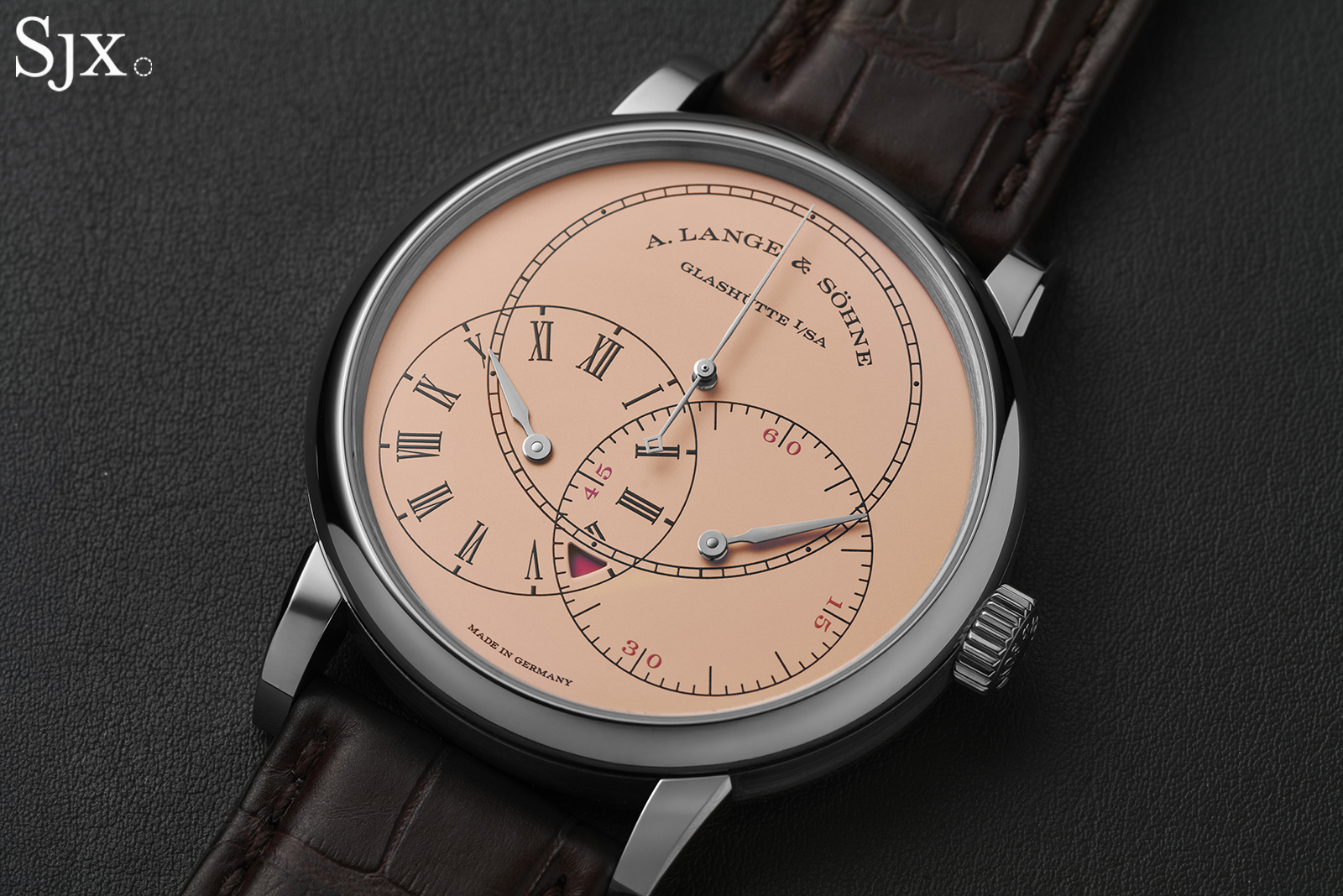
The dial takes some getting used to when reading the time, and even if after getting used to it the layout is not the most intuitive. But it is symmetrical and appealing.
Each of the indicators is self explanatory, while the small triangular aperture above six o’clock is a low-power reminder. It turns red 10 hours before the end of the 42 hour power reserve. It’s not extremely useful, and I would have preferred a cleaner dial free of this aperture. Fortunately, it is not obtrusive and generally blends into the dial.
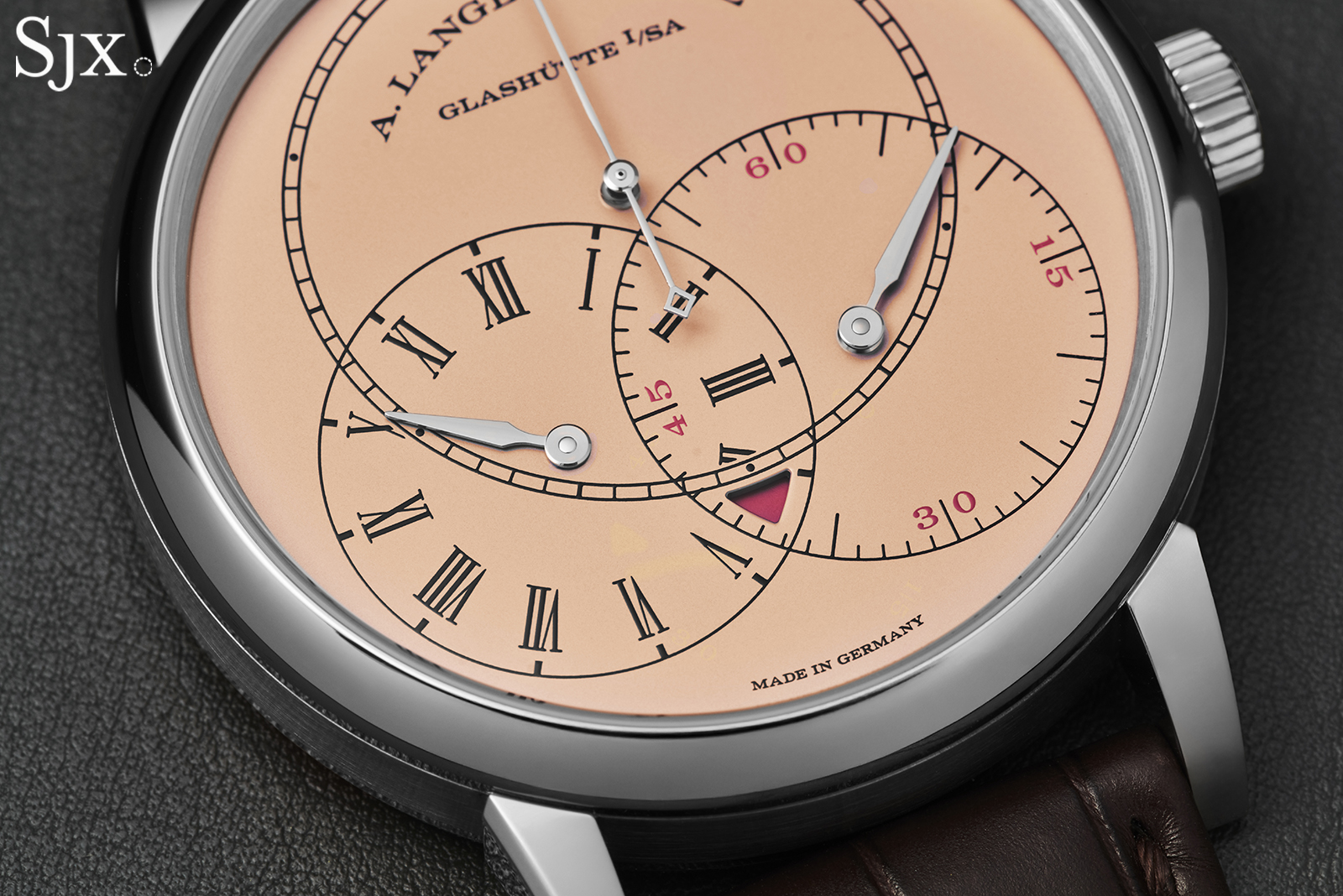
The pink gold livery makes this Jumping Seconds more easily likeable, especially since “salmon” is such a current shade. In the usual Lange manner, the “pink gold” dial is actually solid, 18k pink gold; it’s less a colour than a description of the material. This helps it feel less faddish than the average “salmon” dial.
The case is solid 18k gold, but white. It’s identical to earlier versions of the models, so the size is smallish by Lange standards. Most of the brand’s complicated watches are bigger. In fact, the other models with the Seyffert dial are either big or enormous.
At 39.9 mm wide and 10.6 mm the case feels similar to the Lange 1. These are good proportions that make it easy to wear.
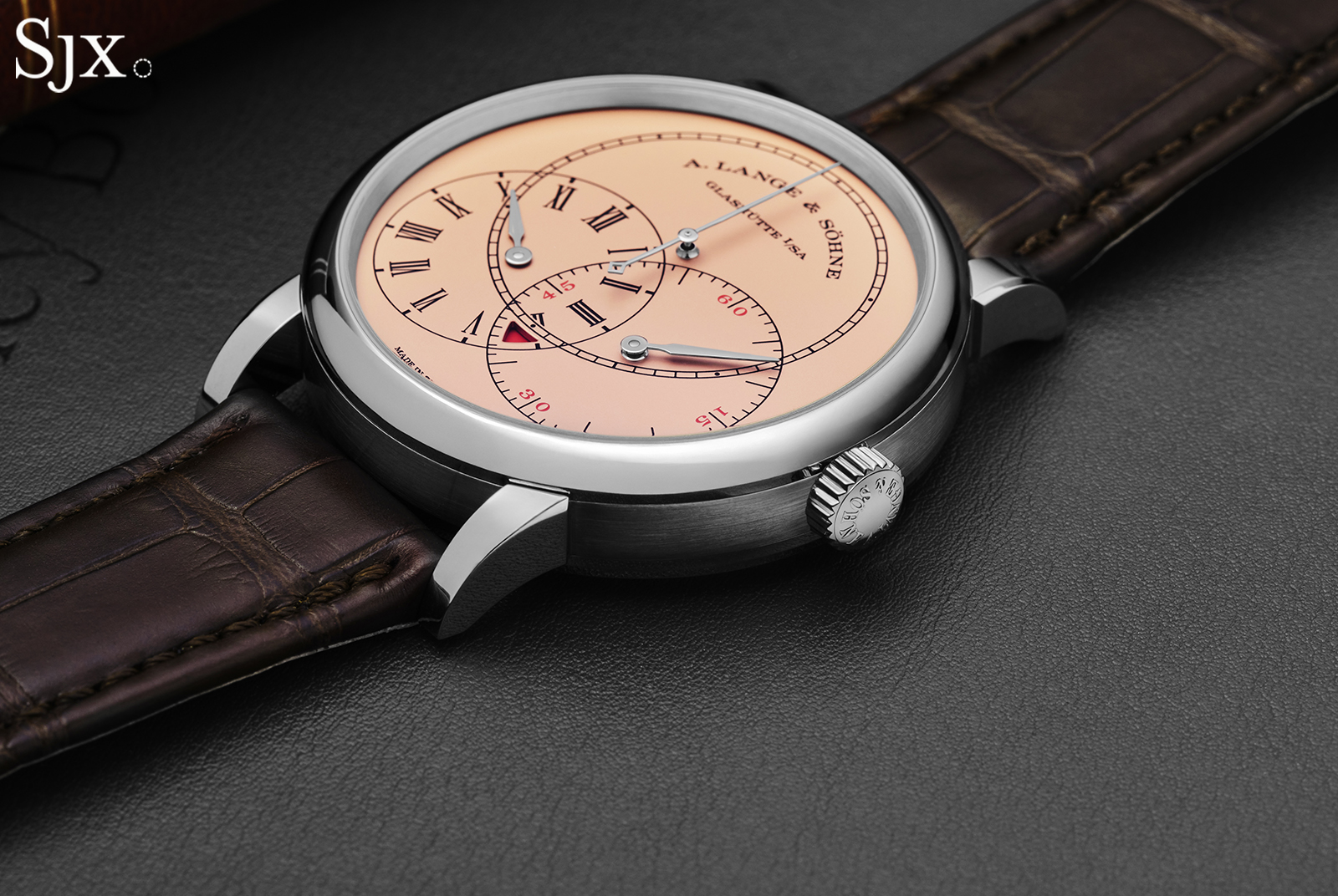
The L094.1 inside is one of Lange’s interesting calibres, both visually and functionally. Despite the relatively straightforward display on the front – it’s basically a time-only display with power reserve – the movement actually has four complications: deadbeat seconds, constant force mechanism, zero-reset hack seconds, and the low-power reserve indicator. Importantly, the complications make sense all together.
The deadbeat seconds and remontoir are a pair. The remontoir winds and unwinds once a second, providing the impulse to drive the deadbeat seconds hand that correspondingly advances one step per second. The purpose of the remontoir is to give the independent seconds hand its own, secondary power source, ensuring the timekeeping portion of the movement remains unaffected by the energy needs of the jumping seconds.
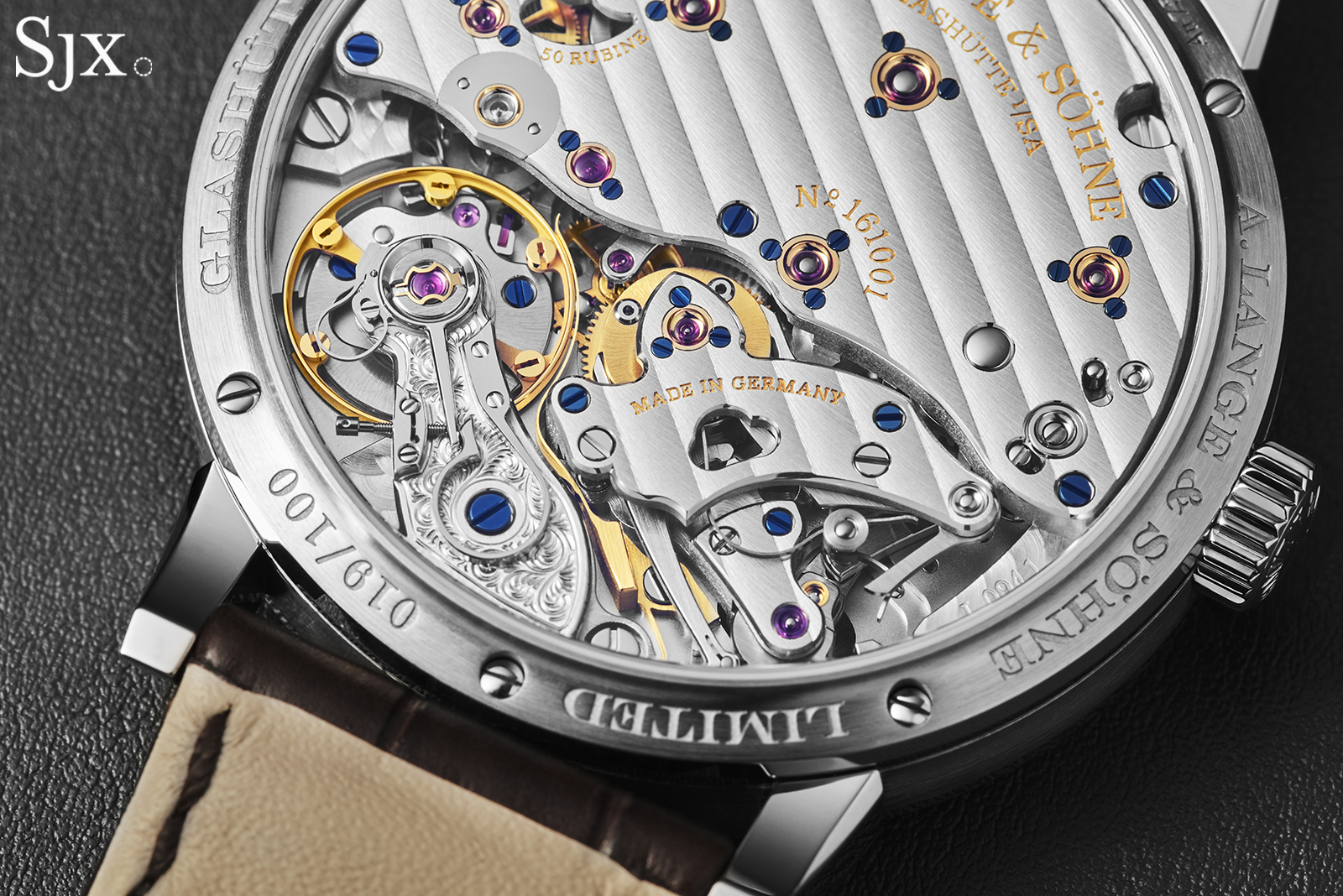
This precision-centric approach is also reflected on the front, since the regulator-style dial is historically associated with precision clocks and watches. Again, the zero-reset hacking seconds serves the same goal, since it helps with setting the time accurately against a time signal.
And the end-of-life indicator is a reminder to wind the watch, ensuring the mainspring is always in a good state of wind, ensuring the movement is kept running with an optimal amount of energy.
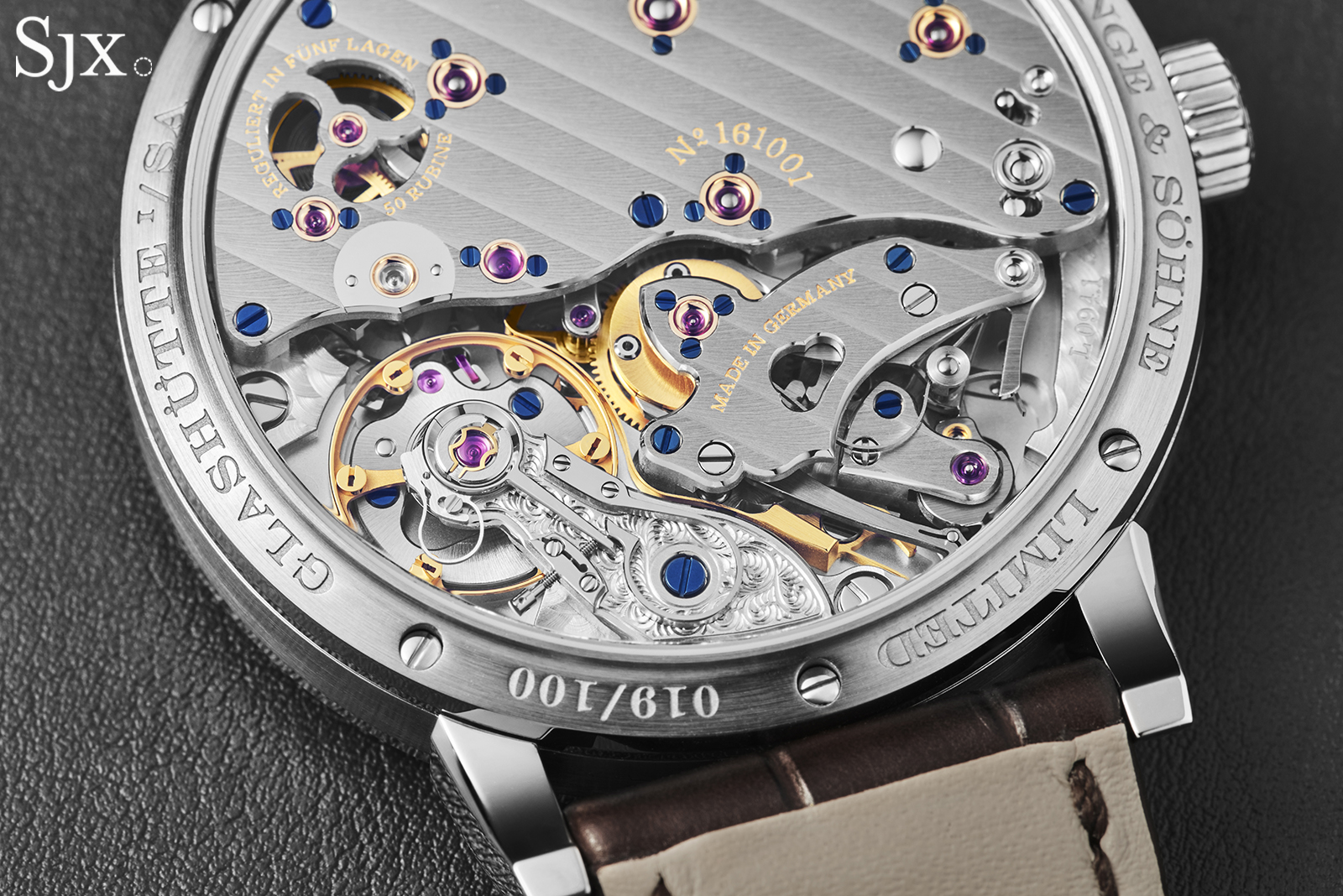
All of the complications are evident from the back as the movement has been constructed to show off the key mechanism.
The calibre has a smaller, two-thirds plate instead of the three-quarter plate that is standard for most Lange movements. This serves to reveal the hacking and zero-reset mechanism which sits under its own bridge. And visible on the two-thirds plate is a circular aperture that shows off the small concentric spring of the remontoir mechanism.
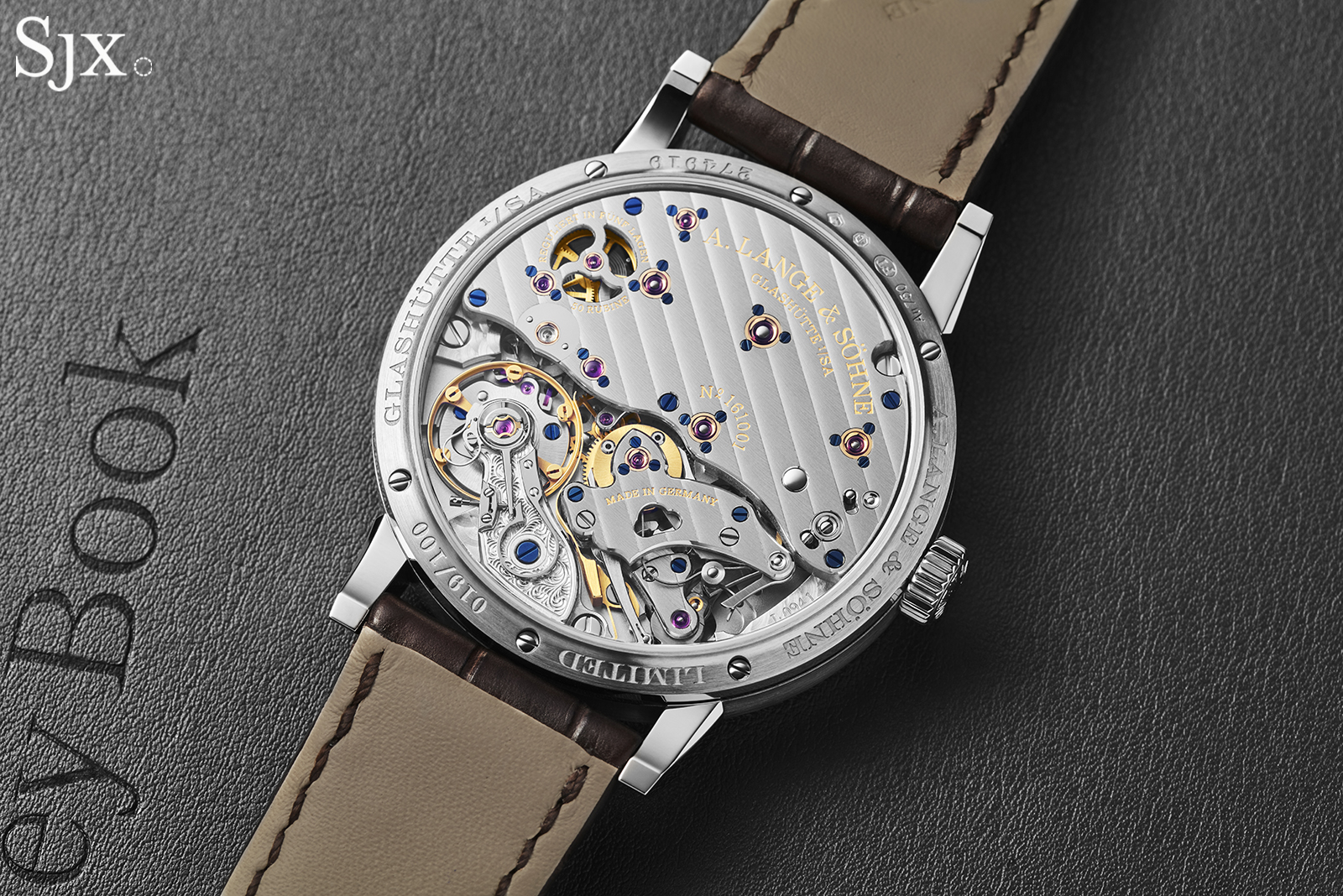
The movement construction also allows for more decoration than on the average time-only Lange watch. The zero-reset mechanism bridge in particular stands out for the flourishes in its decor, as does the aperture for the remontoir spring.
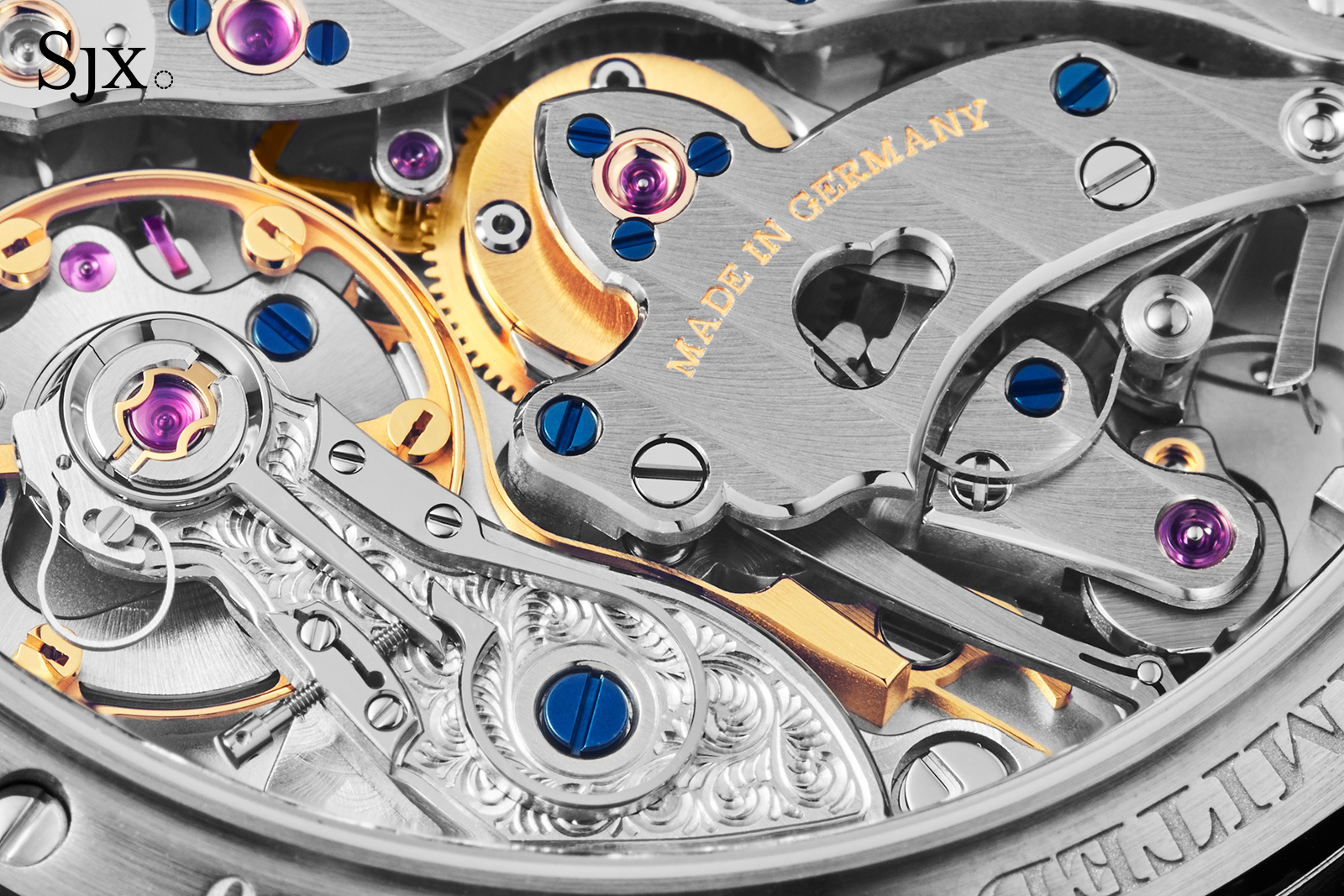
Key facts and price
A. Lange & Söhne Richard Lange Jumping Seconds
Ref. 252.056
Diameter: 39.9 mm
Height: 10.6 mm
Material: 18k white gold
Crystal: Sapphire
Water resistance: 30 m
Movement: L094.1
Functions: Hours, minutes, jumping seconds, and power reserve
Frequency: 21,600 beats per hour (3 Hz)
Winding: Hand wind
Power reserve: 42 hours
Strap: Alligator with matching pin buckle
Limited edition: 100 pieces
Availability: At A. Lange & Söhne boutiques only
Price: US$108,000 excluding taxes
For more, visit alange-soehne.com.
Back to top.

